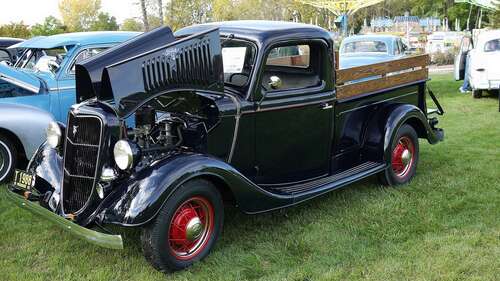
One of the more unique features of the pre-war Model 50 was the cab. Prior to its redesign, the substructures of the cabs (when available) were built from wood. This changed entirely in 1935 when Ford began building cabs completely out of steel and all in one piece. Instead of the angular lines of the old Model TT, A, and B, the Model 50 came with a more rounded roof and a sloped windshield. This design philosophy was also reflected in the heart-shaped radiator grille, which added a touch of sophistication to the utilitarian work beast.
The cargo bed was lengthened to 69 inches, and the spare tire was moved to the passenger side, ahead of the fender. Deluxe models followed soon after the base version and were fitted with a swan neck gear shifter for the three-speed sliding manual, as well as a new V-shaped bumper.
The Model 50 remained in production until 1941 and sold more than four million trucks. During World War II, all American carmakers ceased construction of passenger vehicles and redirected their prodigious production power to the war effort.
[Featured image by Lars-Göran Lindgren Sweden via Wikimedia Commons | Cropped and scaled | CC BY-SA 3.0]

